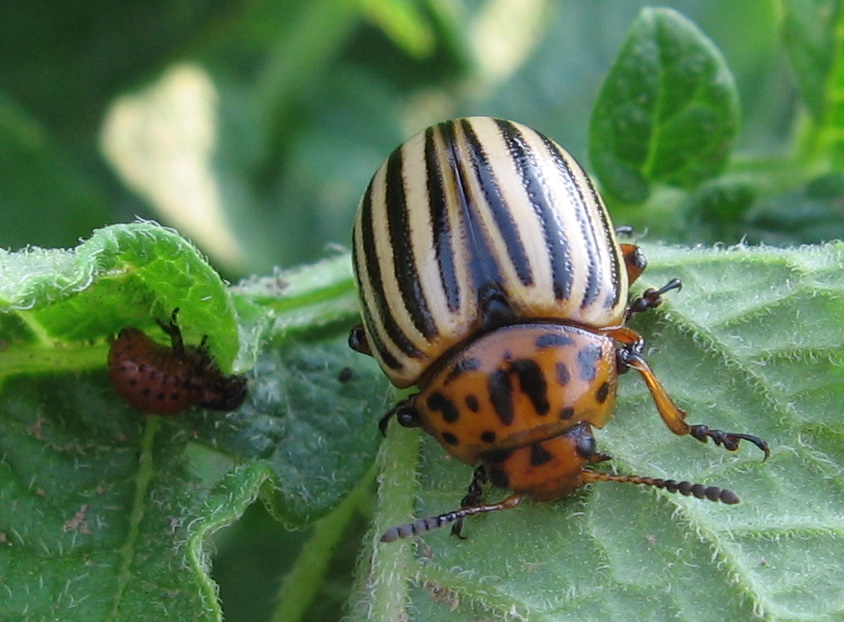An edible insecticidal gene therapy teachnique to curb plant pests has been developed by German scientists. 
Insect pests cost agriculture and the wider economy millions in lost revenues and productivity each year. The widespread use of chemical pesticides has also steadily selected for progressively more resistant insect strains with the result that greater numbers of applications, and the use of more potent agents, are routinely required to protect crops. At the same time, however, pollinators and other desirable species are caught in the cross-fire.
Now German researcher Ralph Bock and his colleagues have developed an edible form of gene therapy to target specific pest species. The team have targeted the notorious Colorado Potato beetle, which is endemic across the Americas, Europe and parts of Asia and devastates the foliage of members of the potato family including also tomatoes and aubergines.
Using GM techniques, the German scientists have added segments to the plant's DNA sequences called interfering RNAs that block the activity of two key genes in the beetle larvae, the actin gene, which controls cell structure, and the Shrub gene which controls how chemicals are moved around inside cells. This means that, when the beetles eat the plant leaves, the interfering RNAs are absorbed in the bugs' bodies, penetrate their cells and deactivate these genes, disabling the affected cells.The resulting plants were 70-100% lethal when the pests ate them.
Scientists have attempted to use this sort of RNA interference gene therapy approach previously, but without success. This is because the plant cells normally naturally destroy the interfering RNA molecules, preventing them from building up to a level sufficient to do much damage to a pest. The breakthrough made by Bock and his colleagues, which is published this week in Science, was to add the interfering RNA genes not to the plant DNA itself but exclusively to the chloroplasts in the plants' leaves.
Chloroplasts are the green structures that enable plants to photosynthesise using light from the Sun. Critically they have their own DNA sequences because they were originally free-living microbes called cyanobacteria.
Millions of years ago these microorganisms teamed up with primitive plants and began living inside plant cells. The plant afforded them protection and food and in return the bacteria shared their genetic know-how for capturing the energy in sunlight. And because chloroplasts don't break down interfering RNA genes like the plant cells do, sufficiently high concentrations of the RNAs can accumulate to kill off would-be consumers.
The interfereing RNA can also target exclusively pest genes, so pollinators, and human consumers wouldn't be affected. Critically, the same technique could be used to combat a range of plant pests, and the genes being targeted could be adjusted to keep step with the insects' natural evolving resistance.










Comments
Add a comment